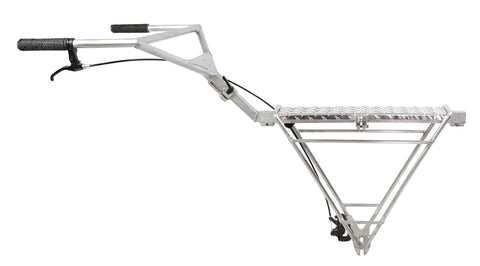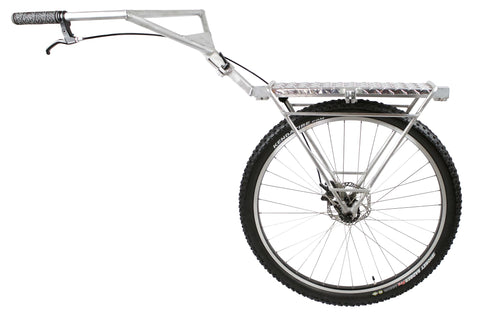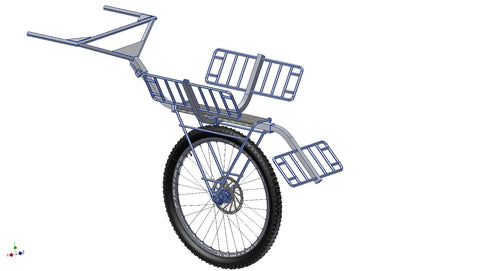Pack Animal Options: Pack Goats and Hiking Carts
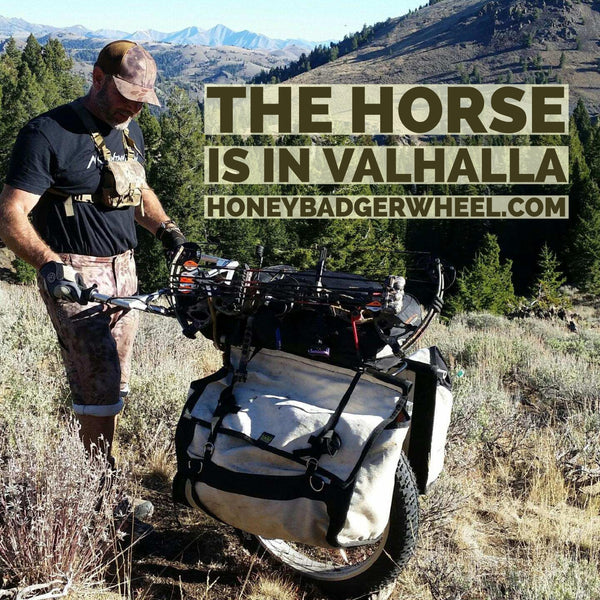
Hikers are turning to alternative methods to pack gear into the backcountry. For example, have you seen an increase in pack goats on the trail over the past few years? You may have. Pack goats are gaining in popularity and for good reasons. Have you seen hiking carts? You probably haven't and there's a good reason why you haven't. That is about to change thanks to recently proposed legislation.
Pack Goats: A Quick History
According to the North American Pack Goat Association or NAPgA, pack goats were popularized in the United States in the 1980s by John Mionczynsky. He began using pack goats in the 1970s as a beast of burden to carry gear into the backcountry for scientists. He quickly appreciated their benefits and began a business guiding hikers into the mountains carrying food and supplies. He published a book in 2004 about his experiences using pack goats titled The Pack Goat. Now available for purchase on Amazon.
John started a company selling pack saddles and saddlebags for pack goats. It didn't take long for others to see the benefits and others starting guiding services. Today there is even a forum for hikers discussing their experiences and tips hiking with pack goats.
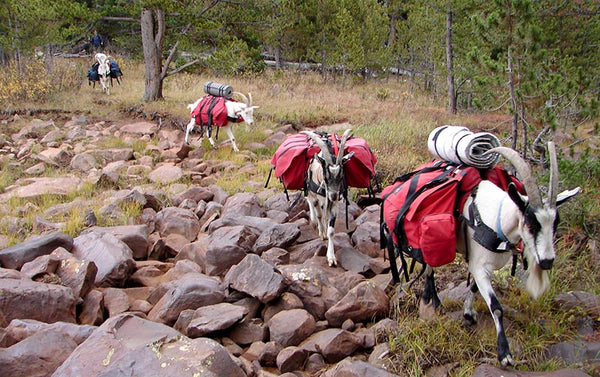
Photo Courtesy of Gear Junkie
Benefits of Pack Goats
Unlike larger pack animals like llamas, mules, and horses, goats are cheaper and easier to manage. They are an ideal pack animal to use especially with younger family members. They do not usually require any food in the backcountry and can even go up to three days without water. One of the only significant downsides to a goat is the load size it can carry. The largest goats can carry up to 50 pounds and smaller goats carry around 25 pounds. If you need more weight all you need to do is add another goat!

Photo Courtesy of Wyoming Public Radio
Learn more about pack goats from goattracksmagazine.org.
Hiking Carts: A Quick History
It is yet to be determined when hiking carts became popular because they are truly in their infancy. We filed our first patent for the Honey Badger Wheel in 2015 and turned to crowdfunding to finance the concept. The project raised $15,000 at the launch of our product on Kickstarter in 2016.

We've seen recent launches of other products with similar ideas as the Honey Badger Wheel such as the Monowalker Fatmate that funded with a crowdfunding campaign also in 2016. The company raised over $35,000 with their initial product release. The Monowalker is a pull behind single wheel hiking cart.
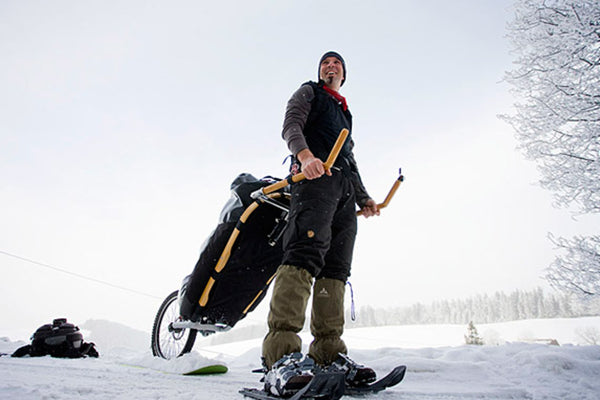
Photo Courtesy of Gizmodo
Another similar idea is the M.U.L.E. As of the publishing of this article the M.U.L.E. is currently raising funds on Kickstarter, but it is not looking like they will hit their goal of $90,000. The campaign has only raised $2,000 with days to go. Will 2016 be known as the year hiking carts were popularized?
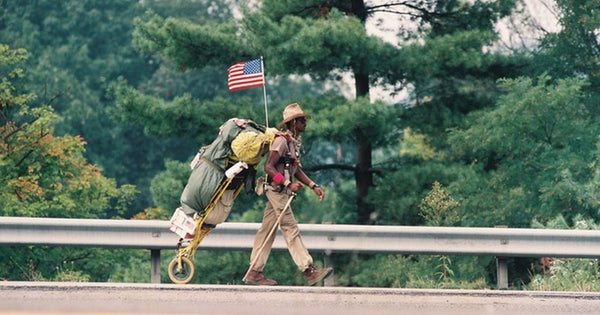
Photo Courtesy of Gear Junkie
Benefits of Hiking Carts
Hiking carts do not require the care and attention animals do. Hiking carts are small, lightweight, collapsible, and durable. They do not have a lifespan. They can carry 3-6 times the weight of a pack goat. On the other hand, they do not climb as well as pack goats and they do not offer companionship. Pack goats are just a lot of fun and make for an enjoyable experience for the family. Hiking carts are a practical alternative.

A Wilderness Reality Check
We've identified in several articles that we've published that the Wilderness Act of 1964 and the following interpretation of the Act in 1966 have prevented hiking carts from entering the wilderness. A hiking cart or one wheel cart falls into the same category as a bicycle. The 1966 interpretation reads:
"Mechanical transport, as herein used, shall include any contrivance which travels over ground, snow, or water, on wheels, tracks, skids, or by floatation and is propelled by a nonliving power source contained or carried on or within the device."
36 CFR § 293.6(a) (1973), formerly 36 CFR § 251.75 (1966)
The Wilderness Act as well as the interpretation did not ban the hiking cart. The interpretation clearly states "propelled by a nonliving power source". The hiking cart is propelled by a human, not a nonliving power source. Unfortunately, the interpretation of the interpretation has deemed that humans are nonliving power sources.

As we've discussed previously, legislation - proposed by Senators Orrin Hatch and Mike Lee - is seeking to change the current interpretation and return to the original Wilderness Act of 1964 vis-a-vis S.3205. See the proposed legislation here. The legislation will put the power back into the people's hands. It will allow local federal authorities to determine which trails may be used by nonmotorized hiking carts.

The current law has prevented hiking carts from growing in popularity as pack animals have in general and pack goats in particular. Hunters are using tools like the Honey Badger Wheel in other areas where one wheel carts are allowed. They're finding enormous benefits over other previous means of packing gear in and out of the backcountry.
Hikers are also beginning to use them where they are allowed and some are taking the unnecessary risks using them where they are disallowed. Hiking carts offer many benefits and their time has come. The question remains: "Will wheelpacking with hiking carts be allowed to grow in popularity?" It may require an act of congress, but the time has come.


